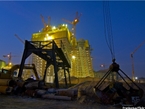We are now in the fourth or fifth consecutive “recovery summer,” and a sustainable level of growth for the American economy is as elusive today as it was during the prior recovery summers. There are many reasons why the economy is not growing as it should after the theoretical end of the Great Recession, and for many small entrepreneurs, this recession has yet to end.
In the 35+ years that I have worked in the architectural profession, including 23 years as a firm partner, I have experienced several recessions including the late seventies to early eighties, early nineties, post-9/11, and post-2007. The Great Recession has been deeper and longer-lasting for many reasons, particularly the housing bubble and subsequent bank failures, which have resulted in a systematic tightening of available capital, which is the “fuel” required to grow an economy.
When the Obama administration began assembling the initial Stimulus plan, many hoped that the funding would in fact stimulate the economy in a way that would help small businesses and entrepreneurs recover from the recession. As we now know, the Stimulus funded a shopping list of “gimmes” for well-connected cronies, campaign finance bundlers, and politically-connected hacks resulting in some unfortunately spectacular failures–particularly in “green” initiatives such as solar energy (Solyndra), windmills, energy retrofits, and high speed rail.
Among other promises, the Stimulus was to create thousands of new “green jobs”; this never happened. Small businesses and entrepreneurs got the short end and, in fact, many of them are no longer in business. Some are struggling to stay in business by not taking a salary in an effort to keep the doors open. Architecture has been particularly hard hit in the last five years. There are fewer architects in the profession now than there were in the late 1990s, and by some estimates, at least 20% of the architectural staff nationwide has been unemployed for some time in the past five years; most have been underemployed.
Architecture is part of the development and construction industry, which is the largest employer in the United States. This industry sector includes a variety of professions and skilled trades including architecture, engineering, materials manufacturing, construction management, and general contracting. While some materials are manufactured overseas (steel and gypsum wall board in China, for example) a vast majority of materials manufacturing and the labor force in development and construction is distributed locally throughout the United States. The downstream effect on the national economy is considerable; for every job position in the architectural field, there are 10 jobs created in building construction or building materials manufacturing.
Some economists believe that a nation’s economy is similar to a complex ecological system characterized by thousands if not millions of transactions, large and small, that occur on a daily basis. Most of these transactions for goods or services are between consumers and small entrepreneurs or between entrepreneurs. These transactions provide an economic livelihood for families and communities throughout the country. The transactions also fund future investments that allow businesses to grow over time benefitting not only entrepreneurs, but their employees, customers and clients as well.
Most entrepreneurial activity, particularly in development and construction requires some level of access to capital. One of the reasons that this sector of the economy is slow to recover is the difficulty in raising capital. One of the long-term consequences of the Dodd-Frank law is the cost of compliance with these regulations will be prohibitive to small local banks that traditionally funded development and construction projects in their respective communities. With the full implementation of Dodd-Frank, small community banks will either close or merge with larger regional banks. This will only make the ability to finance development and construction more difficult in smaller cities and communities.
Most non-farm jobs require a building to house the work being done, whether it is in manufacturing or services. When the economy truly recovers, there will be a demand for renovation or new construction of non-residential buildings. A true economic recovery will occur when the development and construction industry returns to a sustainable level of growth. This will be the indicator that the broader economy is recovering as well.

COMMENTS
Please let us know if you're having issues with commenting.